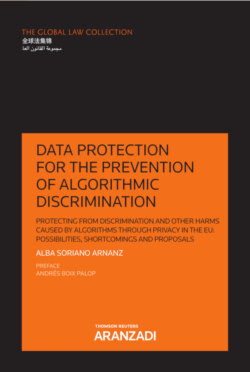Читать книгу Data protection for the prevention of algorithmic discrimination - Alba Soriano Arnanz - Страница 29
На сайте Литреса книга снята с продажи.
4.1. Automatic and autonomous systems
ОглавлениеAlgorithms can be divided in two categories according to their degree of autonomy. Yeung labels said categories as systems with functional and decisional autonomy.173 However, for the purposes of this research, it is more useful to differentiate between automatic systems and systems with decisional autonomy.
Automatic systems are those in which every possible outcome is predetermined in the programming phase so that the algorithm has no scope for autonomous decision-making. The programme will generate the given outcome if the necessary elements concur. These systems are designed to follow simple instructions and have little or no margin for interpretation. For example, an automatic system deployed to determine whether an individual is eligible for some form of welfare aid may be designed to simply review whether the boxes ticked by the applicant in the relevant form make her eligible for aid. In this case, the algorithm does not analyse further information and does not control that the information contained in the application is true or false, but simply processes the boxes that were ticked and yields an outcome that is already predetermined.
Within the context of administrative law, using automatic systems would be equivalent to the exercise on non-discretionary powers. For example, in the case of the Spanish energy bond, the system had to simply check that applicants complied with the requirements set by the relevant regulatory instrument. These systems are supposed to act in an automatic manner and yield the results they have been instructed to produce when the relevant variables have a certain value. Thus, in theory, these programmes should not lead to many errors and other problematic issues that are more frequent in systems with decisional autonomy. However, as it was previously pointed out with regard to the Spanish energy bond example, these systems can also yield erroneous outcomes, for instance, by denying public aid benefits to individuals that comply with all the necessary requirements.
Systems with decisional autonomy (autonomous systems) are those that constantly self-develop and the outcomes of which are not completely predetermined when they are designed. These systems pose greater problems when used both in the private and public sectors, although especially in the latter, due to the loss in control and legitimacy of the decision-making process.
